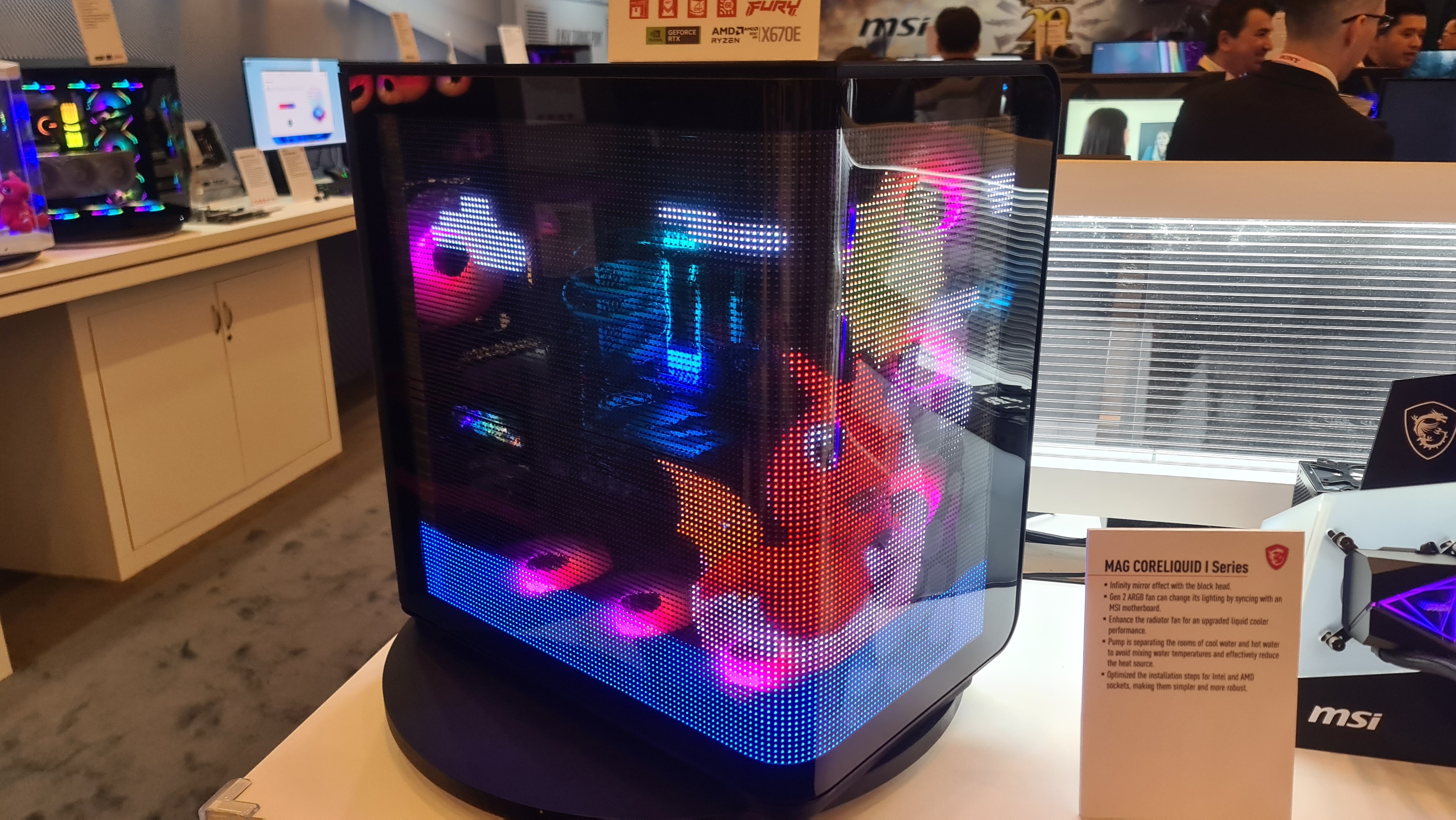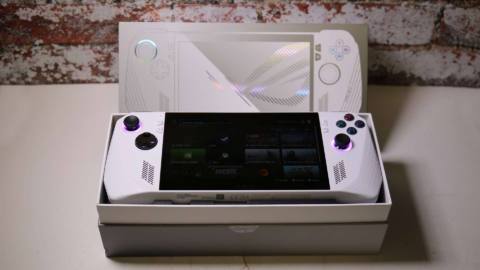
This month I've been testing: Laptops and flight sticks once more, with a focus on a couple of RTX 4090 mobile beasts. I still reckon the RTX 4080 mobile is a much better shout for a laptop GPU, but some will always prefer opting for the biggest GPU you can buy, even if it comes with some serious drawbacks.
Tech trade shows are the place for companies to show off not just the latest consumer products, but also the wild, the wacky, and the futuristic extreme. For some time now, we've seen transparent displays and transparent screen technology turn up at many of these events, yet they were always seemingly a few years away from release.
However, the tide is beginning to turn, and some of these devices seem tantalisingly close to release, with some planning to launch very soon.
Samsung took the headlines at this year's CES with its claim to the world's first transparent Micro LED display, which showed off some impressive colour reproduction and brightness, along with greater transparency that lets you see more of what's on the other side. LG meanwhile unveiled the world's first wireless transparent OLED TV, which it said would be available to purchase this year.
We've also covered some leaked images of Lenovo's transparent laptop concept to be unveiled at MWC, which looks like yet another attempt to show off a use case for the tech, coming to your home devices sometime in the near future.
Trouble is, I still can't see why you'd want one.
Commercial usage is one thing. Samsung's gigantic Micro LED displays look very pretty and impressive, and that'd be a great thing in say, a fancy hotel lobby. Visiting guests would ooh and ahh over the tech, children would run around it peering through the glass at each other, and everyone would feel very reassured that they'd spent huge gobs of cash very wisely in picking such high-tech lodgings in which to stay during their trip.
But in your home, or on your lap? I remain less than convinced. For starters, let's talk about the big honkin' elephant sitting directly in the middle of our transparent room: Visual fidelity and legibility.
See, to my mind, the purpose of a display is to show you things. Things you want to see, want to read, want to immerse yourself in, in detail. Display technology up until this point has focussed primarily on delivering the user visual information with as much clarity, vibrancy and legibility as panel technology can provide, because after all, that's why you'd want to spend your money. You want to see things, and see them as well as they can possibly be rendered.

So what is transparency bringing to the party? I'll admit, I've rarely seen a document or a webpage on a transparent display, primarily because that's hardly ever what's demonstrated in the trade booths. It's always fireworks over a night-time cityscape, or fish swimming merrily through a bowl. The hope is, that with a solid background helpfully rendered behind the text, or some heavily adjustable transparency settings, it's a perfectly usable experience comparable to the legibility of a regular panel.
However, as things stand all attempts I've seen at rendering an opaque block on one of these displays looks nowhere near as clear as it would on a traditional screen, with green fringing, blurry pixels and odd distortion effects. Are all these issues really a good trade off for the ability to gaze through the panel itself?
Another LG CES demonstration came in the form of the Dukebox, an “innovative audio product” concept that features a gorgeous looking adjustable transparency OLED display in front of its very pretty glowing valves, complete with the suggestion that it could be used to watch a film.
I mean, I'm sure it could, but given the issues we've seen so far the question is, would you really want to?

LGs transparent wireless OLED TV, for what it's worth, does feature two different display modes. You can view your content in transparent mode to create a “compelling and atmospheric effect”, or you can press a button to raise a contrast screen behind the display, which helpfully turns it into something that looks a bit more like a regular TV.
LG suggests that, as it's a big see-through glass panel, in transparent mode you can put your TV in the middle of the room as a massive display for photos and artwork. Much less obtrusive than a regular display, that big bit of glass, you see.
Still, good luck keeping your children or visiting guests from smearing it with fingerprints from both sides, or dust from collecting either side of the panel. Keeping a big, prominently placed glass panel clean on both sides strikes as a headache, although given the likely pricing of such cutting edge tech, perhaps for your average early adopter keeping your screen clean yourself won't be much of an issue.
And then there's the Lenovo laptop, dubbed Project Crystal. When we first covered the leaked images, there was some suggestion in the comments that it could be making use of a transparent display that was only visible on one side, and that the assumption that you could view it from the back and have everyone read your emails in public (albeit in reverse) was premature. Fair enough.
However, it's just debuted at the Mobile World Congress in Barcelona, and I'm sorry to say I told you so, but…
While Lenovo says it's working on potential features to block out the back of the display, as it stands this transparent laptop doesn't really bring much to the table but an aesthetic. And while I can commend it as a visually interesting concept display piece, there doesn't appear to be anything major added to the useability of the device by making it transparent, other than perhaps making it more desirable to run off with because its obviously very expensive.
Before I let this column become too curmudgeonly, I will make one important admission: Transparent displays can be fabulously pretty. We covered a fishbowl PC case demonstrated by MSI at its CES booth featuring an LED crystal film display wrapping around the curve, and even I was impressed by the visual result.

For what it’s worth, novelty is fleeting. If transparent displays do become mainstream, then soon the shine will likely wear off.
It caught our attention. It drew us in. It made us pay attention to the display, if only to witness the novelty of an image rendered beautifully on glass while we could still see what was behind. Once there, the hope was that show attendees would also check out the other products, which we dutifully did, although I'd like to point out that we did so for the purposes of comprehensive journalistic coverage, and not simply because we're drawn to shiny things like moths to a flame.
All very well as a point of sale technique to draw the public gaze then, although for what it's worth, novelty is fleeting. If transparent displays do become mainstream, then soon the shine will likely wear off, and most people will simply ignore the visual clutter in the hope to get to something of substance.
But having one in your home? Buying a transparent panel not simply because it's distractingly pretty, but because you want to daily drive it as a meaningfully useful device you're prepared to spend serious amounts of money on?
So far, count me out.
Still, be prepared to marvel at some fabulous transparent displays in public demonstrations near you. Coo at them, if you will, and I shall be among you. But for me and my personal devices, I'll take my screens traditional if that's alright with the rest of you, sci-fi aesthetics be damned.






